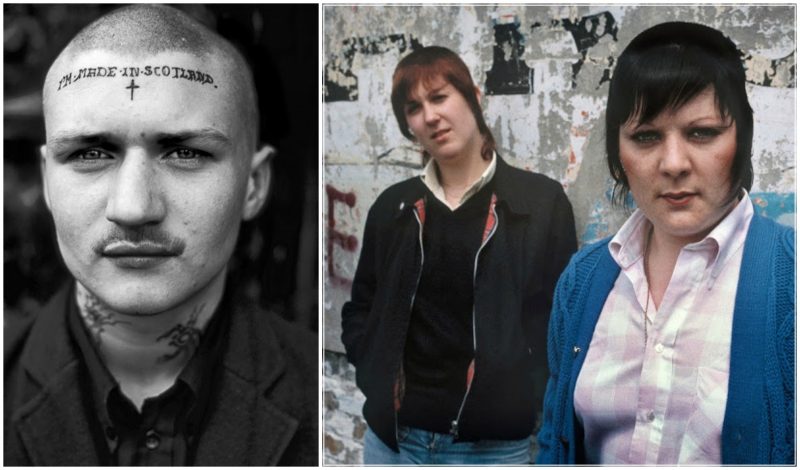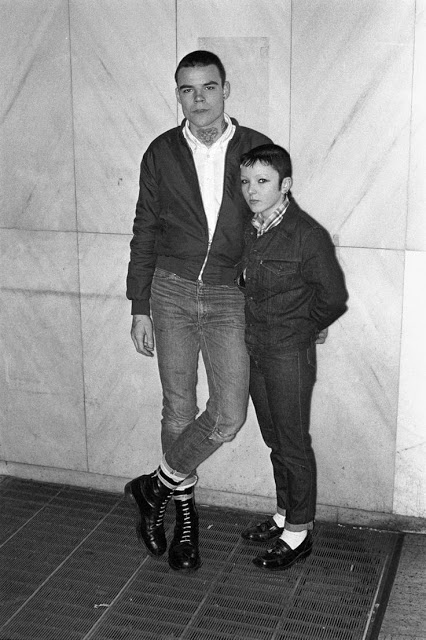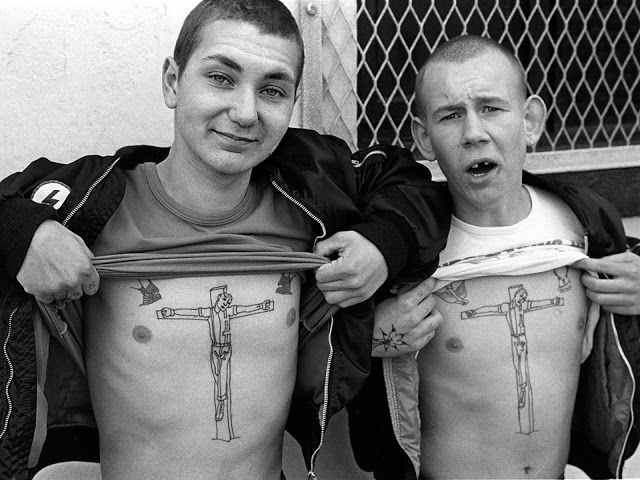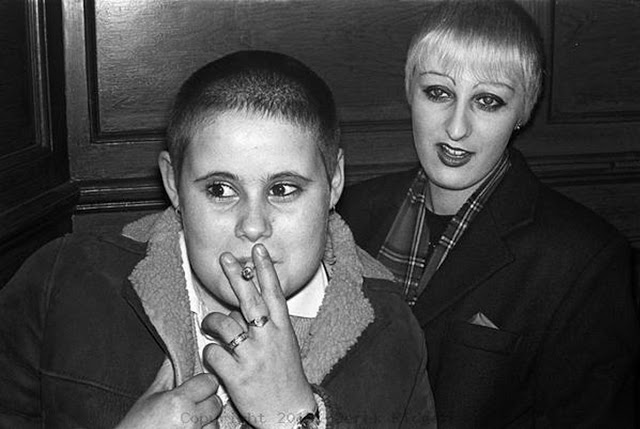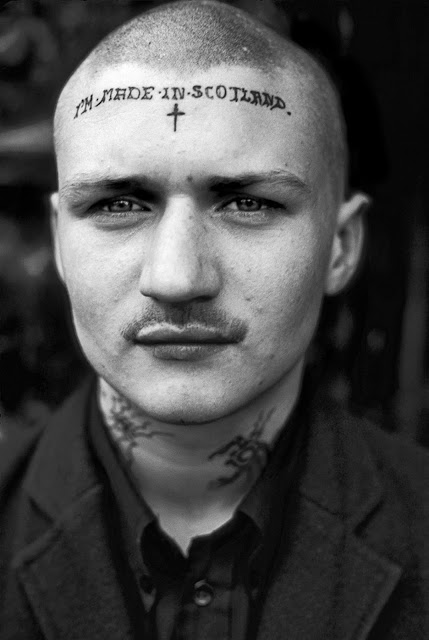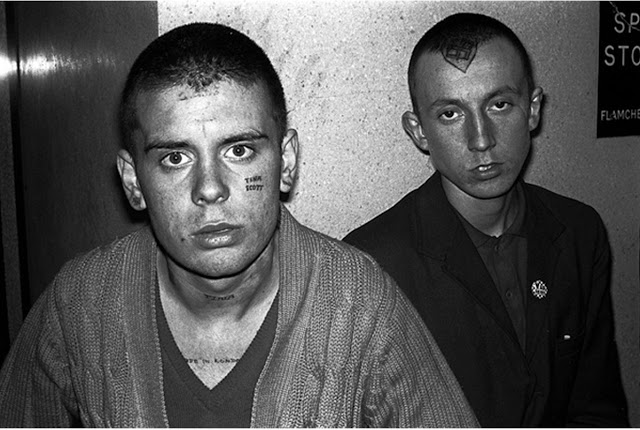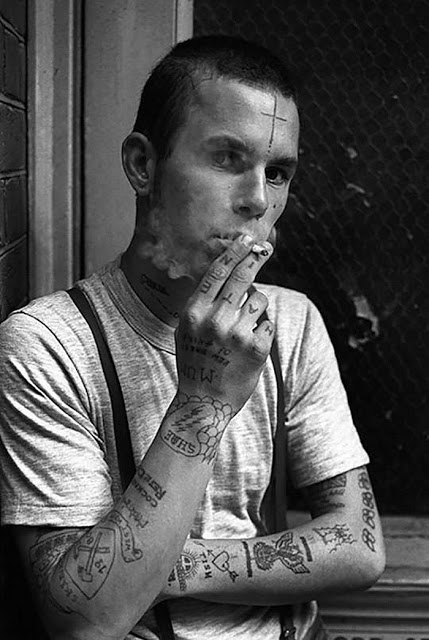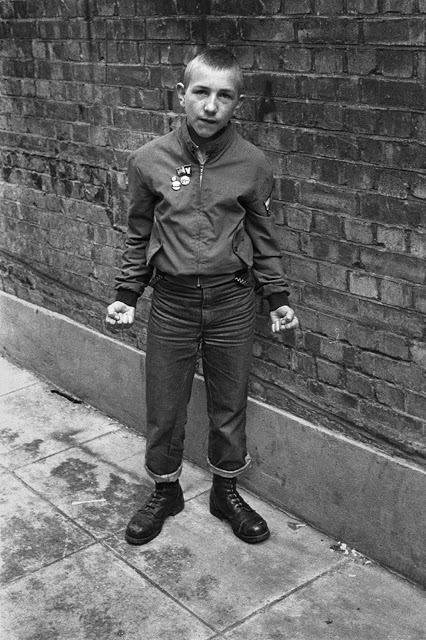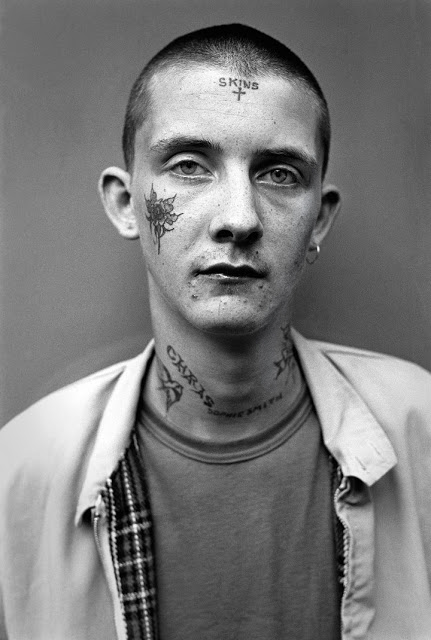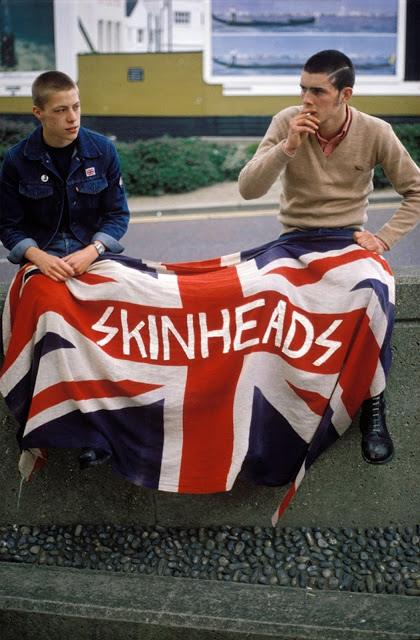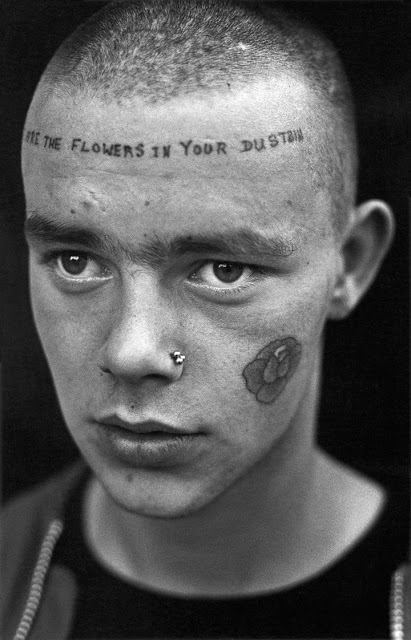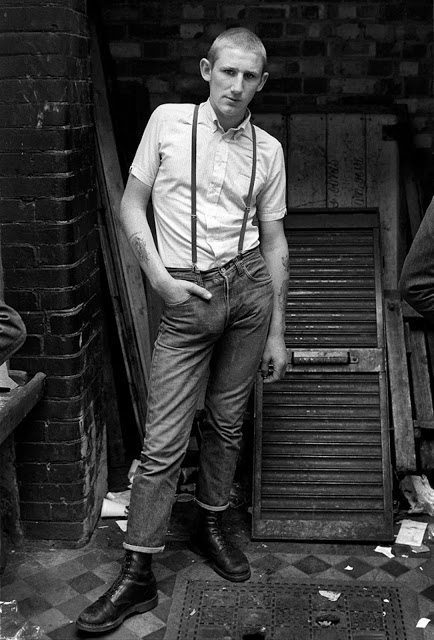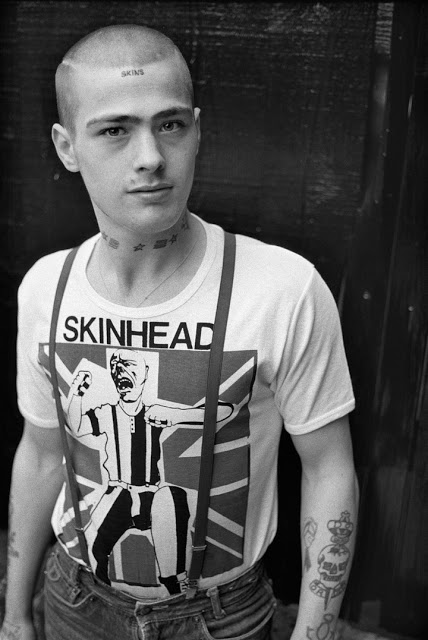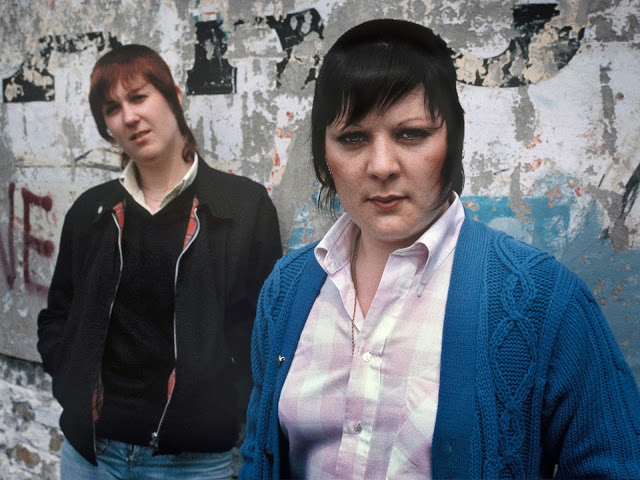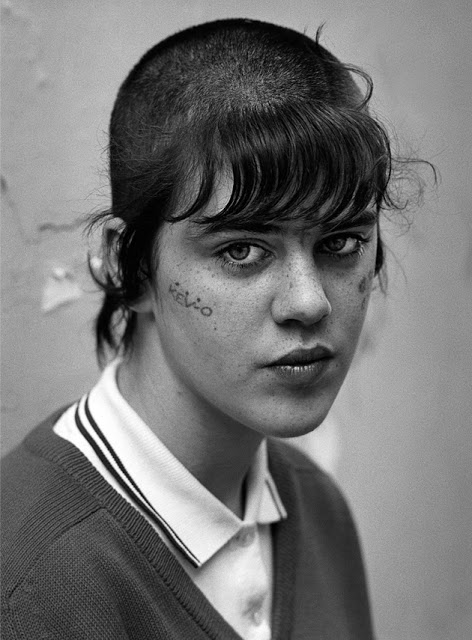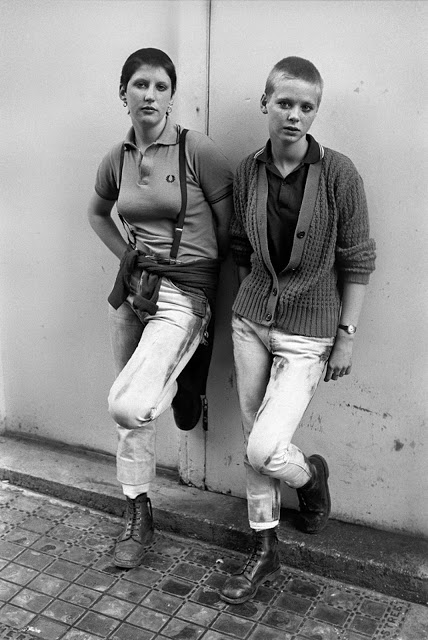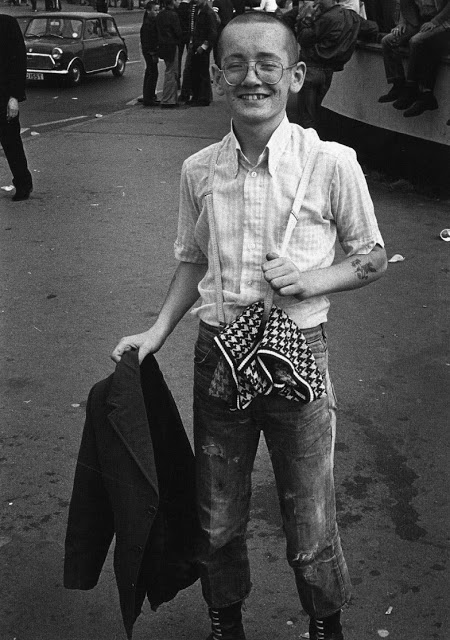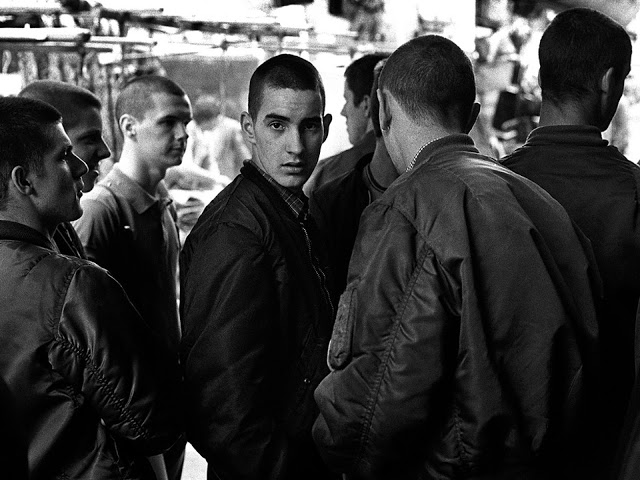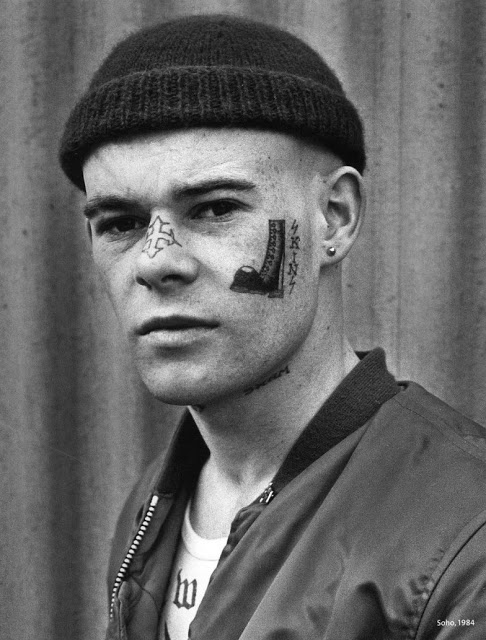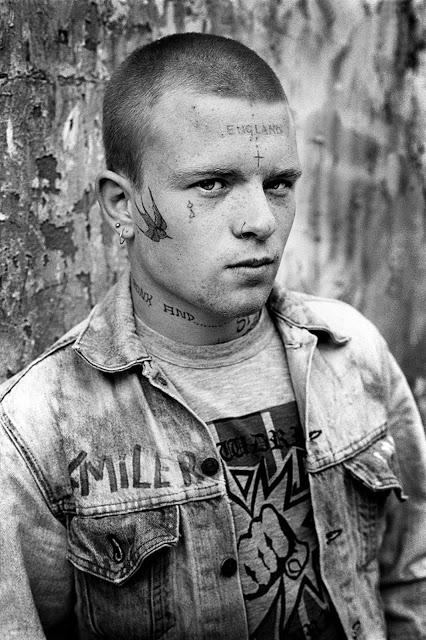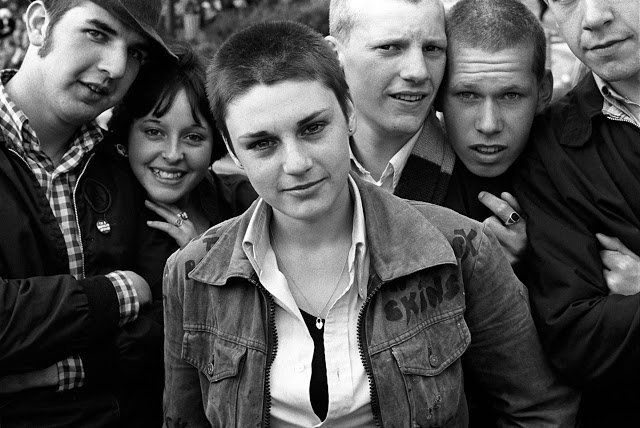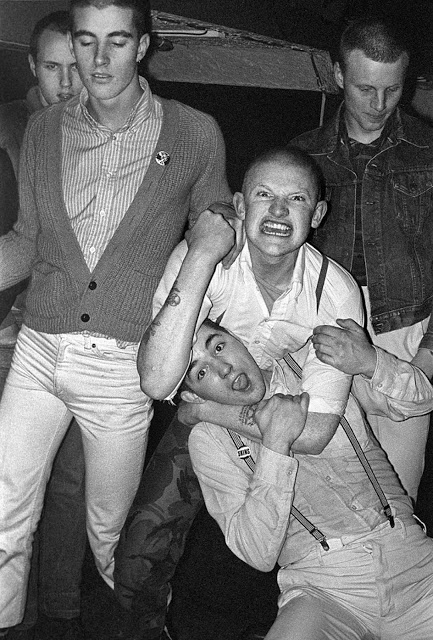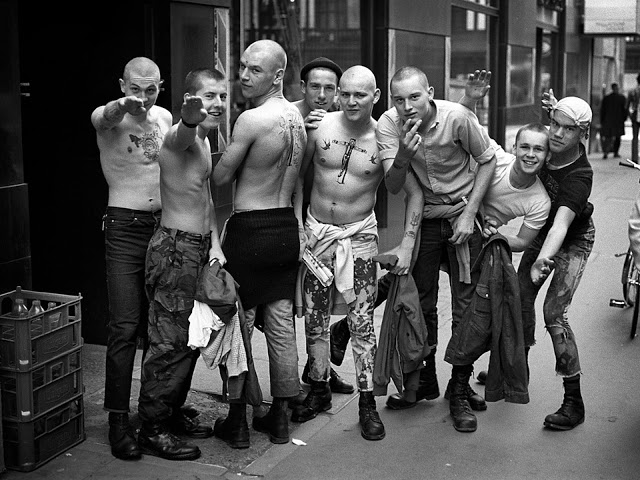In the late 1950s, the post-war economic boom led to an increase in disposable income among many young people. Some of those youths spent that income on new fashions popularised by American soul groups, British R&B bands, certain film actors, and Carnaby Street clothing merchants. These youths became known as mods, a youth subculture noted for its consumerism and devotion to fashion, music and scooters.
Mods of lesser means made do with practical clothing styles that suited their lifestyle and employment circumstances: work boots or army boots, straight-leg jeans or Sta-Prest trousers, button-down shirts and braces (called suspenders in North America). When possible, these working class mods spent their money on suits and other sharp outfits to wear at dancehalls, where they enjoyed soul, ska, bluebeat and rocksteady music.
Around 1966, a schism developed between the peacock mods (also known as smooth mods), who were less violent and always wore the latest expensive clothes, and the hard mods (also known as gang mods, Lemonheads or peanuts), who were identified by their shorter hair and more working class image.These hard mods became commonly known as skinheads by about 1968. Their short hair may have come about for practical reasons since long hair can be a liability in industrial jobs and in street fights. Skinheads may also have cut their hair short in defiance of the more middle-class hippie culture. All photos © Derek Ridger
Derek Ridgers is a London based photographer, he documented the striking reality of the skinheads through black and white photographs which you can check out below.
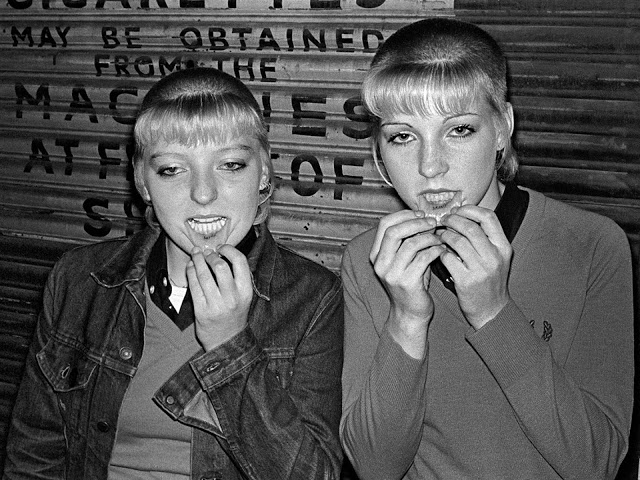

In addition to retaining many mod influences, early skinheads were very interested in Jamaican rude boy styles and culture, especially the music: ska, rocksteady, and early reggae (before the tempo slowed down and lyrics became focused on topics like black nationalism and the Rastafari movement).
Skinhead culture became so popular by 1969 that even the rock band Slade temporarily adopted the look as a marketing strategy. The subculture gained wider notice because of a series of violent and sexually explicit novels byRichard Allen, notably Skinhead and Skinhead Escapes.Due to largescale British migration to Perth, Western Australia, many British youths in that city joined skinhead/sharpies gangs in the late 1960s and developed their own Australian style.
By the early 1970s, the skinhead subculture started to fade from popular culture, and some of the original skins dropped into new categories, such as the suedeheads (defined by the ability to manipulate one’s hair with a comb),smoothies (often with shoulder-length hairstyles), and bootboys (with mod-length hair; associated with gangs and football hooliganism). Some fashion trends returned to the mod roots, with brogues, loafers, suits, and the slacks-and-sweater look making a comeback.
In the late 1970s, the skinhead subculture was revived to a notable extent after the introduction of punk rock. Most of these revivalist skinheads reacted to the commercialism of punk by adopting a look that was in line with the original 1969 skinhead style. This revival included Gary Hodges and Hoxton Tom McCourt (both later of the band the 4-Skins) and Suggs, later of the band Madness. Around this time, some skinheads became affiliated with far-right groups such as the National Front and the British MovementFrom 1979 onwards, punk-influenced skinheads with shorter hair, higher boots and less emphasis on traditional styles grew in numbers and grabbed media attention, mostly due to football hooliganism. There still remained, however, skinheads who preferred the original mod-inspired styles.
Eventually different interpretations of the skinhead subculture expanded beyond Britain and continental Europe. In the United States, certain segments of the hardcore punk scene embraced skinhead styles and developed their own version of the subculture.
